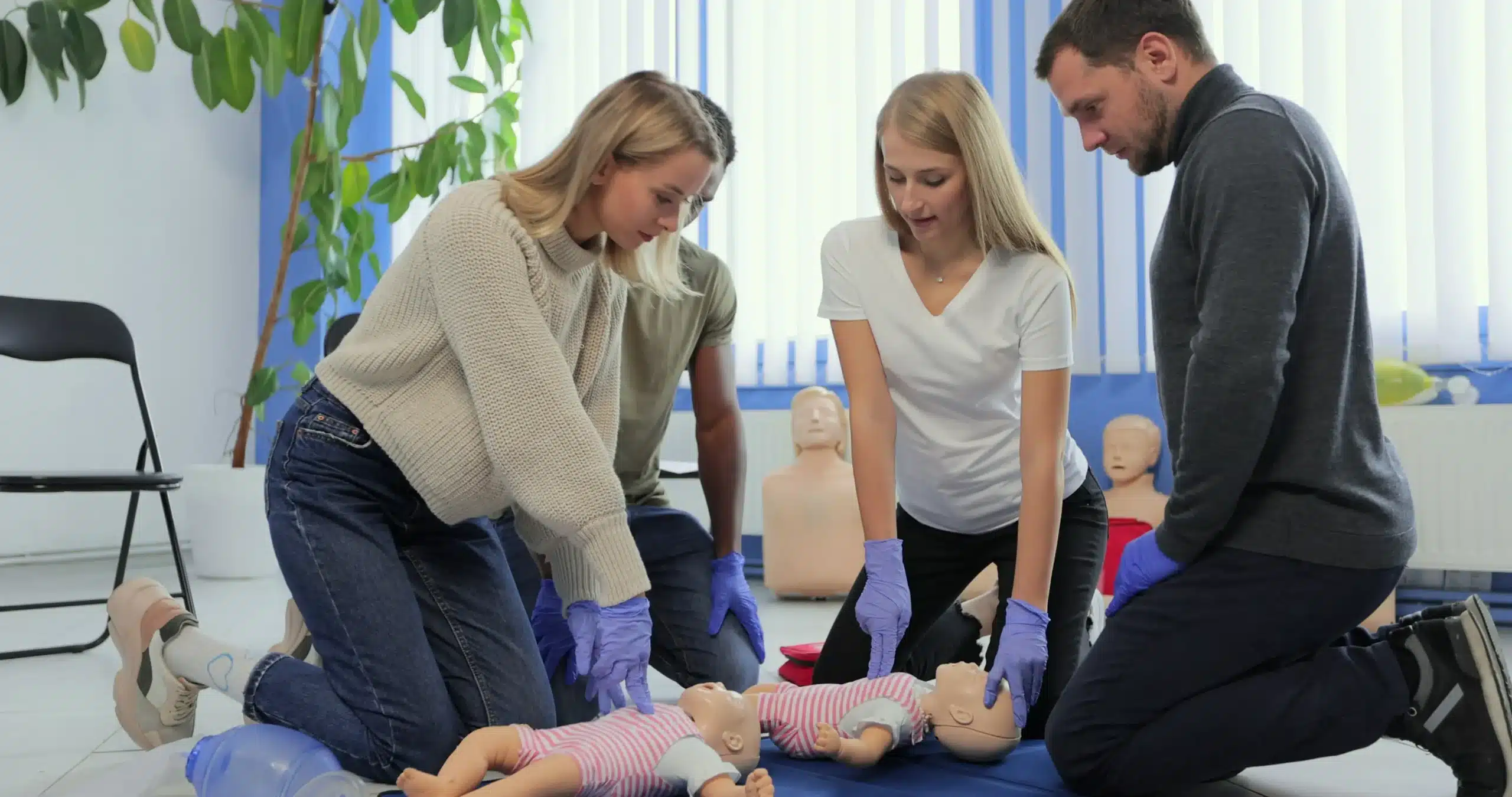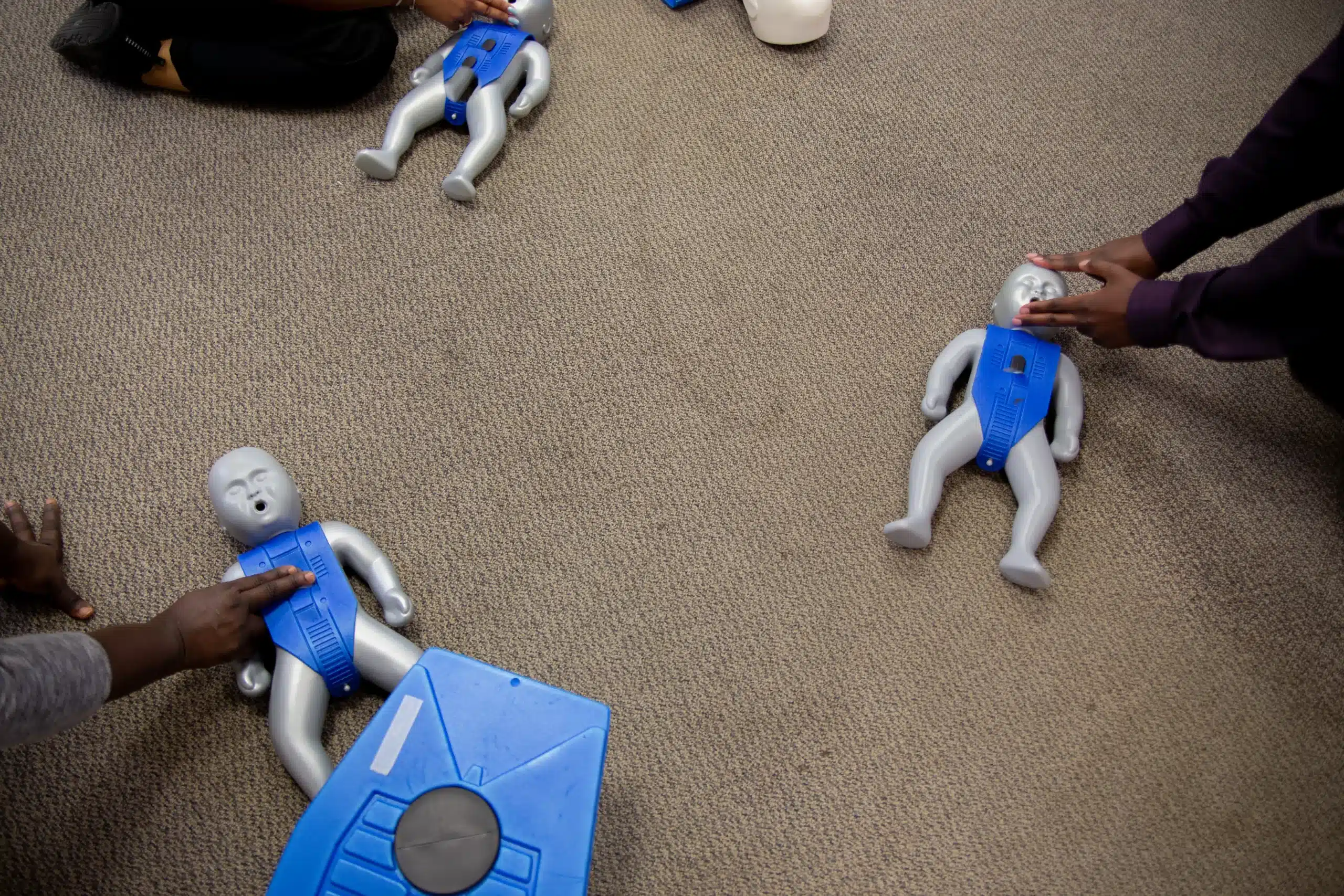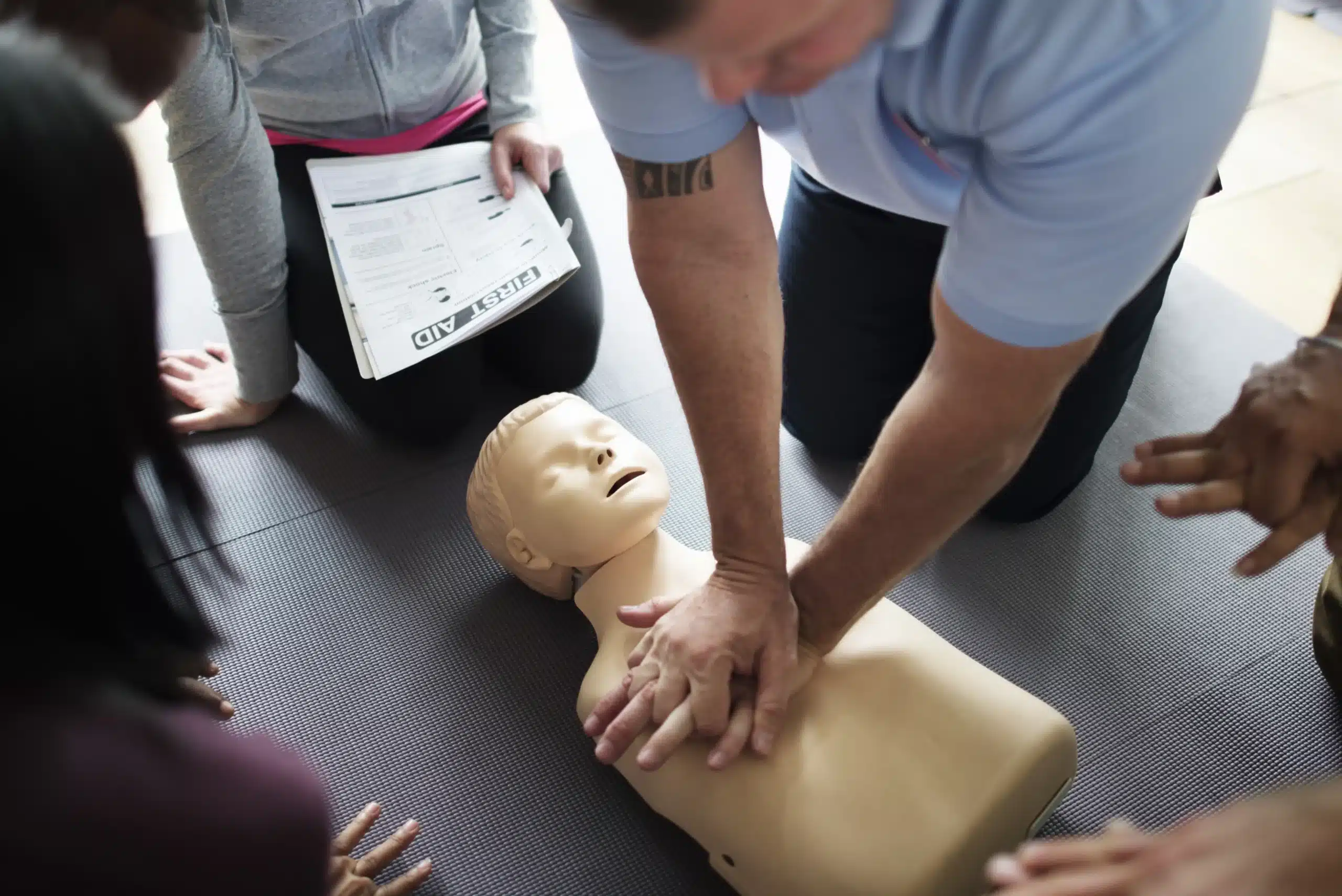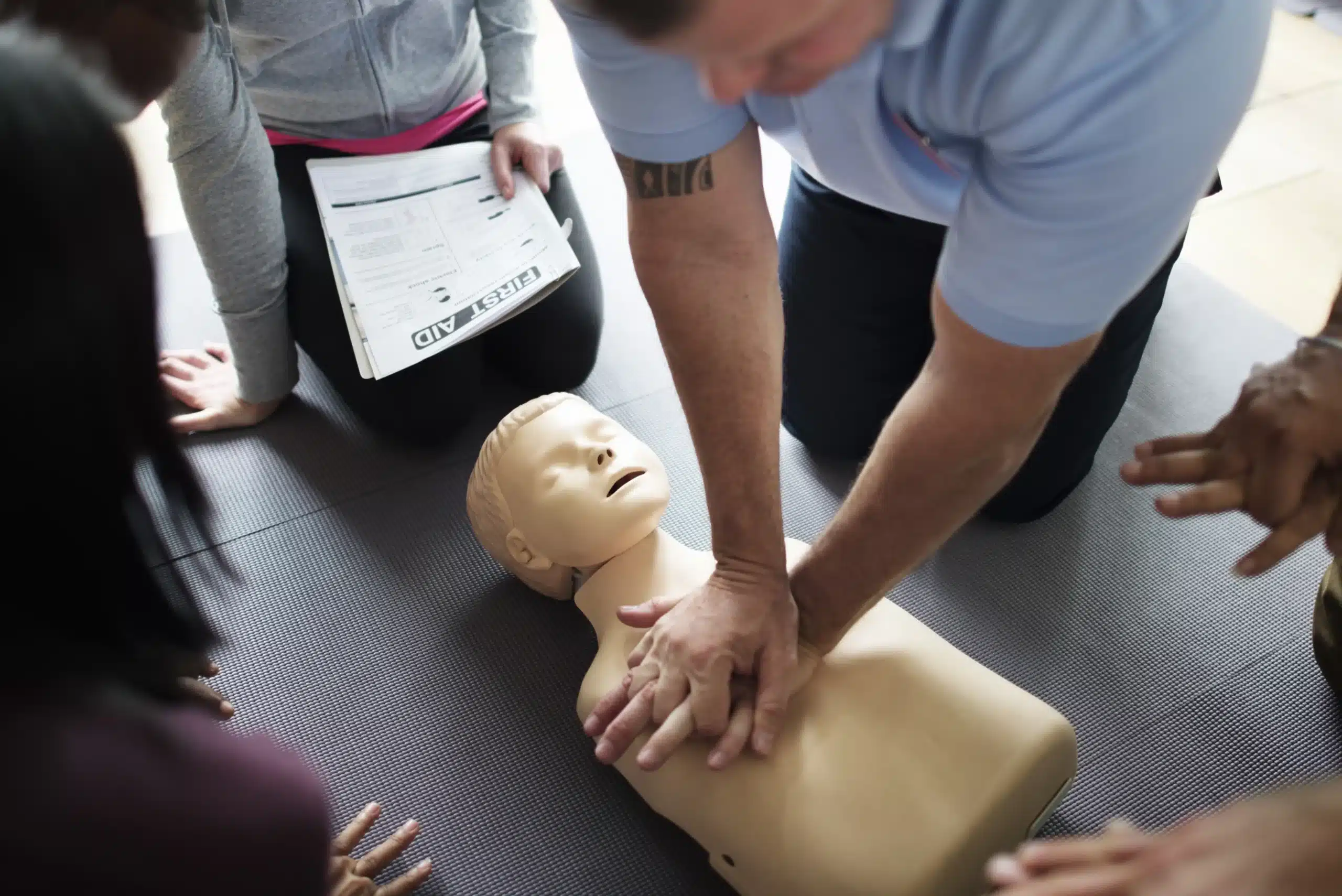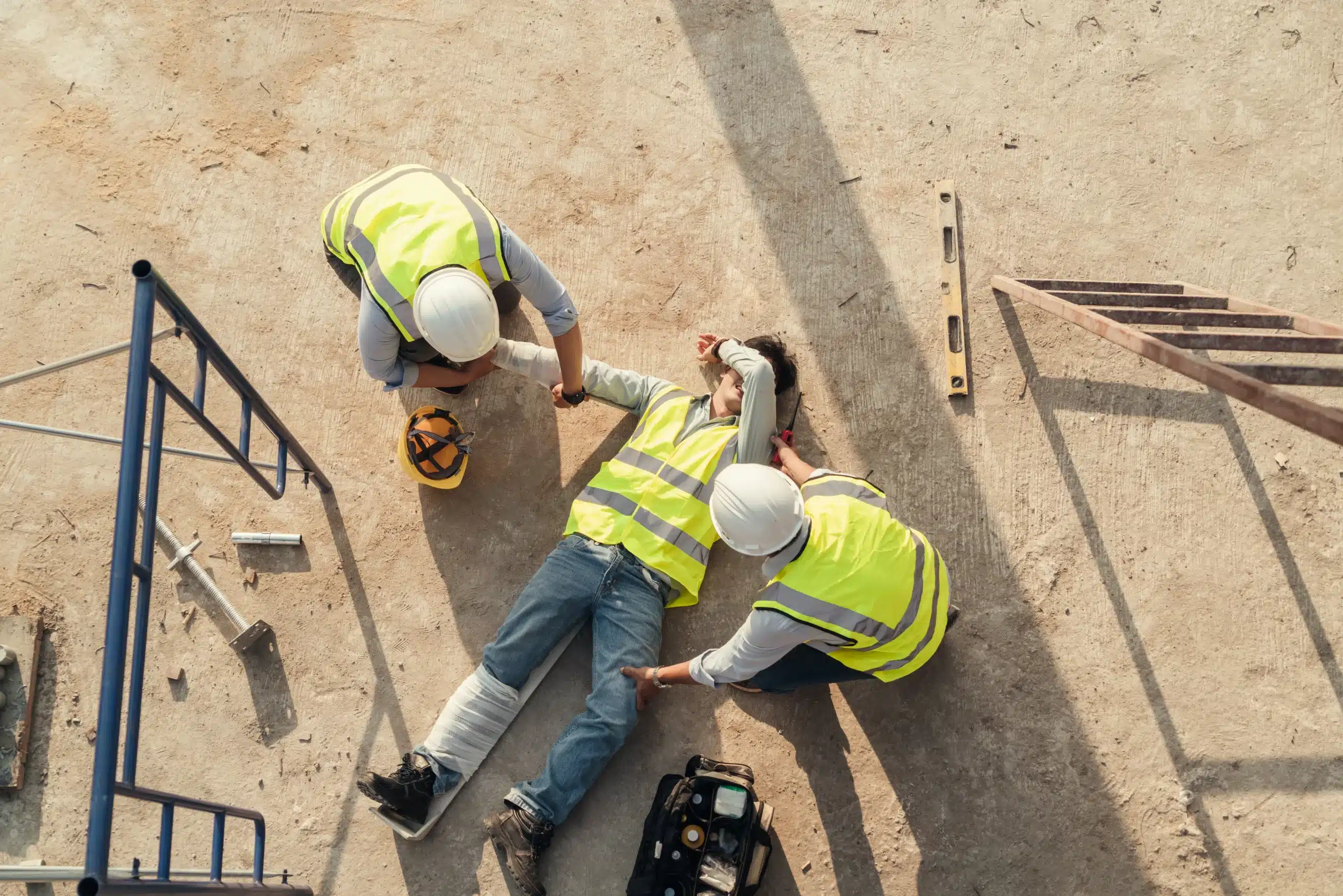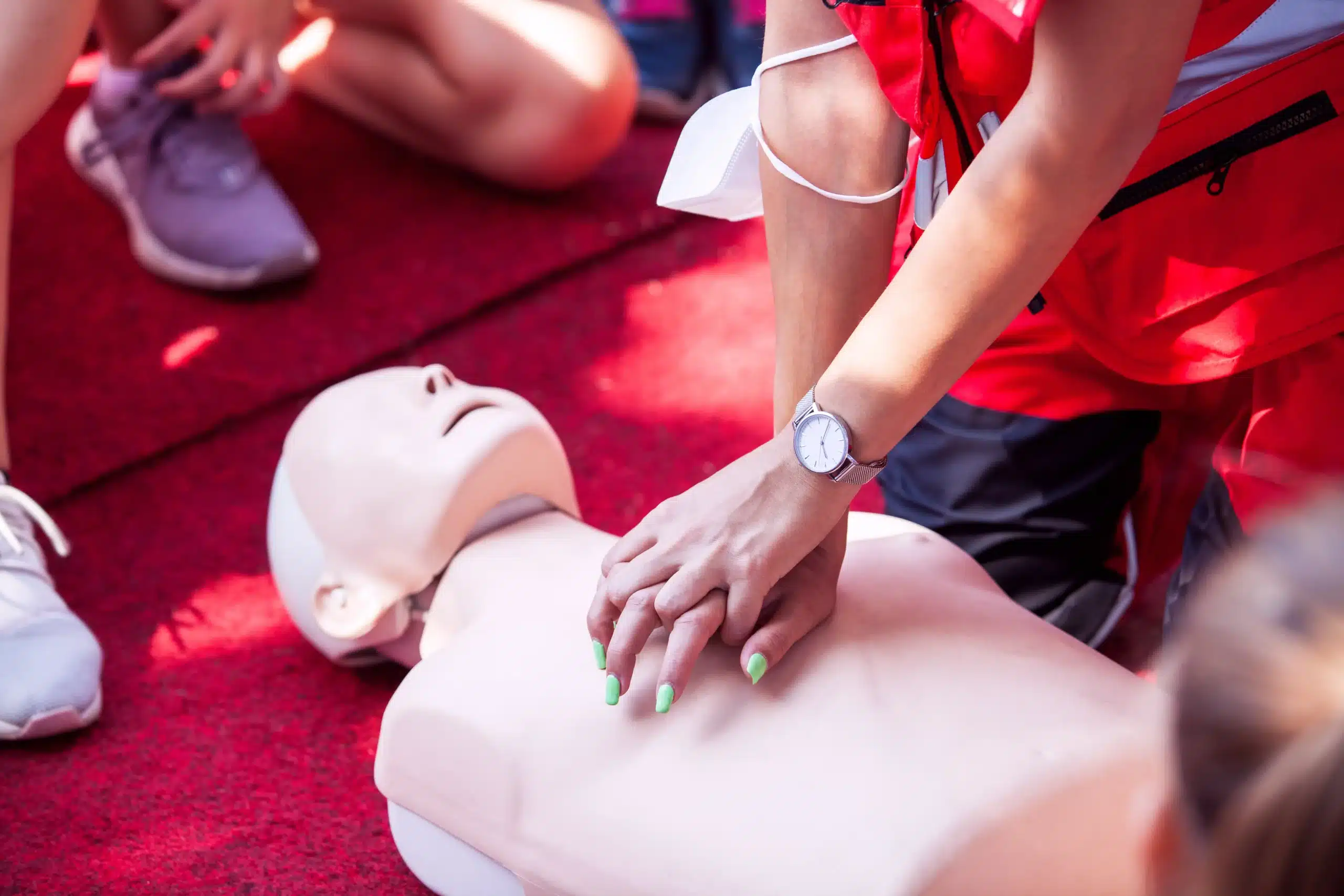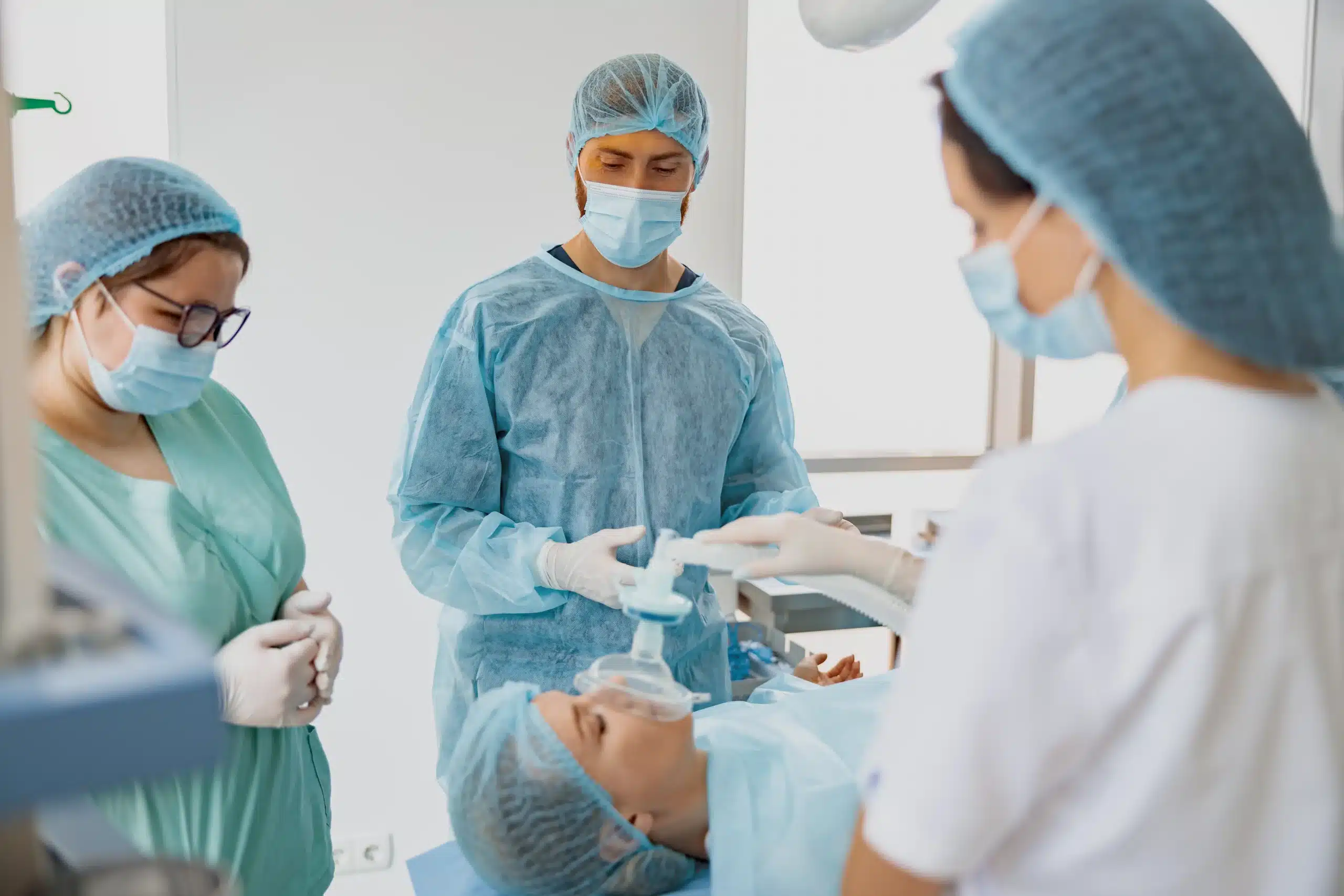Have you ever felt helpless watching a medical emergency unfold, wishing you could do more? BLS training transforms that feeling of helplessness into confident action. By learning Basic Life Support (BLS), you become equipped to provide immediate care in critical situations. If you’re looking for “bls training near me,” this guide will help you find the right course and understand the life-saving skills you’ll gain. From CPR and AED use to airway management, BLS training gives you the tools to make a real difference.
Key Takeaways
- BLS training provides essential life-saving skills: Learn CPR, AED use, and airway management techniques to confidently respond to emergencies. Choose a course format—in-person, online, or blended—that suits your learning style.
- AHA certification ensures high-quality training: Select an AHA-certified training center like Redwood City CPR Classes for instruction aligned with the latest guidelines. This is often a requirement for healthcare providers.
- CPR and BLS training are readily available: Find convenient and affordable options with flexible scheduling and potential discounts. Take the first step towards becoming certified.
What is BLS Training & Why Do You Need It?
Basic Life Support (BLS) training gives you the skills to respond to medical emergencies. These BLS CPR classes, offered by the American Heart Association (AHA), teach you how to act quickly and effectively when every second counts. A good BLS course will cover the latest AHA guidelines, ensuring your training is always current. This training complements CPR and is a vital skill for healthcare providers and anyone who wants to be prepared.
What BLS Covers
BLS training covers a range of life-saving techniques. You’ll learn how to use an automated external defibrillator (AED), a portable device that can help restore a normal heart rhythm. The training also covers basic airway management and techniques for assisting someone who is choking. Redwood City CPR Classes offers AHA-certified courses in CPR, BLS, ACLS, PALS, and First Aid.
How BLS Helps You
BLS training is essential for responding to various medical emergencies. It prepares you to provide immediate care while waiting for professional medical personnel. Because BLS training often accompanies CPR training, you’ll gain a well-rounded understanding of how to handle cardiac arrest and other crises. This nationally recognized certification shows you’ve completed high-quality training that meets industry standards, a valuable asset in any emergency situation.
Find BLS Training Near Redwood City
If you live in Redwood City, Palo Alto, or Menlo Park, finding a Basic Life Support (BLS) class is easier than you think. Several organizations and training centers offer convenient options to fit your schedule and learning style. Here’s a breakdown of where to look:
Redwood City CPR Classes
Redwood City CPR Classes, offered by Safety Training Seminars, is a top choice for BLS certification. They provide AHA-certified courses in CPR, BLS, ACLS, PALS, and First Aid. With classes offered daily from 8 am to 10 pm, their flexible schedule easily accommodates busy professionals and students. For more information on BLS courses in Redwood City, visit the Safety Training Seminars website.
American Red Cross
While the American Red Cross offers excellent training programs, remember that finding the right BLS class often involves confirming the certification type. For healthcare professionals, AHA certification is typically required. Seek out AHA-certified providers like Redwood City CPR Classes or Safety Training Seminars, known for their comprehensive training and experienced instructors.
American Heart Association
The American Heart Association itself doesn’t typically conduct classes directly, but they authorize training centers. Safety Training Seminars offers a range of AHA-certified classes, including BLS, CPR, ACLS, and PALS. AHA certification ensures your training aligns with nationally recognized standards and is widely accepted in healthcare settings.
Hospitals & Medical Centers
Local hospitals and medical centers sometimes offer BLS training, often geared towards their own staff but occasionally open to the public. It’s worth checking with facilities in your area, but keep in mind that these courses might not always be readily available. Safety Training Seminars, a woman-owned AHA Training Center, is a reliable alternative for high-quality courses.
Community Colleges
Community colleges frequently offer BLS training as part of their continuing education programs. These courses can be a cost-effective option, and many providers offer flexible schedules, online registration, and blended learning formats that combine online coursework with in-person skills practice. For more information on available courses and schedules, review CPR class options at nearby community colleges.
Choose the Right BLS Training Format
Finding the right BLS training format depends on your learning style and schedule. Let’s break down each option so you can make the best choice.
In-Person Training: Learn Hands-On
In-person BLS training offers a hands-on learning experience, ideal for those who learn best in interactive environments. You’ll practice skills in real-time alongside other students and receive immediate feedback from a certified instructor. This format is especially helpful for mastering the physical skills required for BLS, such as CPR and using an AED. Redwood City CPR Classes offers AHA-certified BLS courses with a flexible schedule designed to accommodate busy professionals and students. This face-to-face training helps build confidence and competence in performing life-saving techniques.
Online Courses: Learn at Your Pace
If you have a busy schedule, online BLS training might be a good fit. These online courses offer the flexibility to learn at your own pace, fitting the training around your other commitments. Online training typically covers all the essential theoretical components of BLS. This format works well for those who prefer self-directed learning and need more flexibility. However, remember that online-only courses may require a separate in-person skills session for hands-on practice and official certification.
Blended Learning: Get the Best of Both
Blended learning combines online learning with in-person skills sessions. You’ll complete the theoretical coursework online at your own speed and then attend an in-person session to practice your skills. This approach offers a balanced learning experience, allowing you to absorb the information independently and then refine your technique with expert guidance. Blended learning is an excellent option for those who want flexibility but also value hands-on practice and interaction with an instructor.
BLS Training: Cost, Time & Certification
Typical Costs & Discounts
BLS certification courses vary in price depending on the training provider and format. At Redwood City CPR Classes, we offer competitive rates and a low-price guarantee on our AHA-certified BLS courses. We also offer discounts for group classes, making training with colleagues or friends more affordable. Comparing prices and checking for discounts is always wise before registering.
How Long BLS Training Takes
BLS courses are designed to be efficient and comprehensive, typically taking a few hours to complete. Redwood City CPR Classes offers a flexible schedule with classes available daily from 8 am to 10 pm to accommodate busy schedules. Our courses cover the latest AHA guidelines, so you receive up-to-date training in essential life-saving skills, including CPR, AED use, and relieving choking.
Renewing Your BLS Certification
Your BLS certification is valid for two years. To maintain your credentials, take a BLS renewal course before it expires. Safety Training Seminars offers AHA-certified BLS renewal courses in Redwood City. Reviewing course materials and practicing your skills beforehand will help you prepare for the renewal process. Online resources can also help refresh your knowledge.
Get Ready for BLS Training
So, you’re ready to sign up for Basic Life Support training? Great! Knowing what to expect and how to prepare can make your experience smoother and more effective. Here’s what you need to know before your first class.
Enrollment Requirements
Before you commit to a BLS course, double-check that the training center offers AHA-certified courses in CPR, BLS, ACLS, PALS, and First Aid. AHA certification ensures your training meets nationally recognized standards and will be widely accepted. For healthcare providers, this is often a job requirement. Redwood City CPR Classes offers all these certifications, making it easy to find the right course for your needs.
What Happens in Class
BLS classes combine instruction, demonstrations, and hands-on practice. You’ll learn how to recognize life-threatening emergencies, provide high-quality chest compressions, deliver appropriate ventilations, and use an AED. A good BLS course, like the ones offered at Redwood City CPR Classes, follows the latest American Heart Association guidelines, ensuring your training is up-to-date. Expect a dynamic learning environment with opportunities to ask questions and practice your skills.
Tips to Get Certified
Getting your BLS certification is straightforward. Redwood City CPR Classes offers classes daily from 8 am to 10 pm—a flexible schedule designed to accommodate busy professionals and students. You can register online to secure your spot. Review any pre-course materials provided and arrive a few minutes early to get settled. Come prepared to participate actively—ask questions, engage with the instructors, and practice the techniques. CPR training is more accessible than you think, with many providers offering flexible scheduling, online registration, and blended learning formats that combine online coursework with in-person skills practice.
Related Articles
- BLS Classes in Redwood City: Your Complete Guide – Redwood City CPR Classes
- BLS for Healthcare Providers in Palo Alto: Your Guide – Redwood City CPR Classes
- BLS Certification in Palo Alto: The Complete Guide – Redwood City CPR Classes
- BLS Renewal Near Me: Your Simple Recertification Guide – Redwood City CPR Classes
- Advanced Cardiac Life Support (ACLS) in Menlo Park – Redwood City CPR Classes
Frequently Asked Questions
Why is BLS certification important? BLS certification equips you with the skills to respond effectively to medical emergencies like cardiac arrest, choking, and other life-threatening situations. It empowers you to provide immediate care, potentially saving lives while waiting for professional medical help to arrive. It’s a valuable asset for healthcare providers and anyone who wants to be prepared for emergencies.
What’s the difference between BLS and CPR? CPR (Cardiopulmonary Resuscitation) focuses specifically on chest compressions and rescue breaths for someone who has stopped breathing or has no pulse. BLS (Basic Life Support) encompasses CPR but also includes other crucial skills like using an AED, basic airway management, and recognizing the signs of various medical emergencies. Think of CPR as one piece of the larger BLS puzzle.
How do I find a BLS class near me? Several options exist for finding BLS classes. Check local hospitals, community colleges, and organizations like the American Red Cross. For AHA-certified courses, which are often required for healthcare professionals, search online for certified training centers in your area. Redwood City CPR Classes is one such provider, offering a range of AHA-certified courses.
What if I have a busy schedule? Many BLS training providers understand busy schedules and offer flexible options. Look for courses offered on evenings, weekends, or in blended learning formats that combine online coursework with shorter in-person skills sessions. Some providers also offer entirely online courses, allowing you to learn the theoretical material at your own pace before scheduling a separate in-person skills assessment.
How much does BLS certification cost and how long is it valid? The cost of BLS certification varies depending on the training provider and the course format. Check with different providers for their pricing and ask about any available discounts, such as group rates or student discounts. BLS certification is typically valid for two years. Renewal courses are available to maintain your certification.
